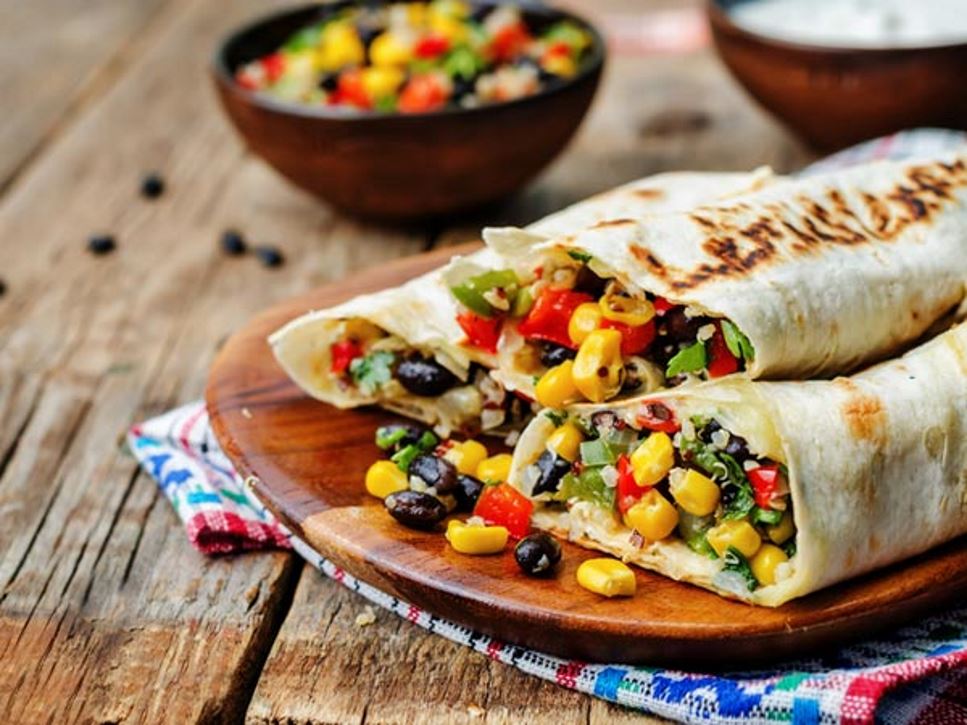South of the border fare is a nutritious option worth trying. Follow our tips and remember: Mexican food is beyond quesadillas and nachos, says Academy spokesperson Marina Chaparro, MPH, RDN, LD, CDE. "Many of the staples are lesser-known Mexican foods such as nopales, flor de calabaza, and chile poblano – all of which are nutritious choices," she says.
Pick Produce
An excellent place to start is the produce aisle. Many Mexican favorites feature fresh fruits and vegetables. Standbys include tomatoes, peppers, avocados and mangoes — but it doesn't end there. Have you tried jicama? This crisp and slightly sweet root vegetable is an excellent source of vitamin C and fiber, and a good source of potassium. Serve it in salads or as a crunchy addition to salsas. What about nopales? These prickly pear cactus paddles are a good source of fiber and can be sautéed, boiled or even added to juice or salsa.
Salsa is an excellent topping, says Chaparro. "Skip heavier condiments like sour cream and cheese, which can add unnecessary saturated fat," she says. "Instead, go for fresh salsa and guacamole. Avocados contain heart-healthy monounsaturated fats, fiber and folate."
A great veggie-friendly way to start your meal is with a cup of gazpacho, a chilled tomato soup, or black bean soup, which is nutrient-packed and high in fiber.
Watch the Fat
Take it easy on sour cream, cheese and crispy, fried tortillas. Basket of chips — we're looking at you! "When ordering tacos, avoid the fried tortilla or large flour tortillas, which can actually be three serving sizes," says Chaparro. "Instead, choose smaller taco-sized corn tortillas to keep your portion size in check."
When ordering at a restaurant, look for descriptions such as "asada" (which means grilled), "served with salsa verde" (a green chili sauce) and "Veracruz-style" (which means it includes a tomato sauce).
Make Modifications
Many restaurants are happy to honor customer requests, so don't be afraid to speak up. Ask for sauces and toppings such as guacamole, cheese and sour cream to be served on the side, or request tomato salsa instead. For tacos, enchiladas and quesadillas, choosing soft tortillas will reduce calories, and corn tortillas may have more nutrients compared to flour tortillas.
At home, make tortillas with canola oil instead of lard. Mash boiled beans and add low-fat milk or vegetable broth to give them the texture of refried beans.
Twist and Spice
When it comes to Mexican eats, adding flavor with minimal fat, calories and sodium is as simple as a twist of lime, a dash of cilantro and a sprinkle of chilies. Look for limón, a relative of Key lime, for a traditional take. Try ceviche, fish marinated in lemon or lime juice, for a healthy citrus-inspired dish.
For cilantro, chop the leaves and use fresh, or use the dried seeds (coriander) whole or ground.
Chilies also are used dried or fresh and come in many varieties, such as jalapeño, poblano, chipotle, serrano and habanero, just to name a few. As a general rule, the larger the chili, the milder it is. Add them to just about anything — soups, meats, salsas — for a punch of flavor and vitamins A and C.
Find a Nutrition Expert
Looking for credible nutrition information and recommendations? The Academy of Nutrition and Dietetics' network of credentialed food and nutrition practitioners are ready to help!

